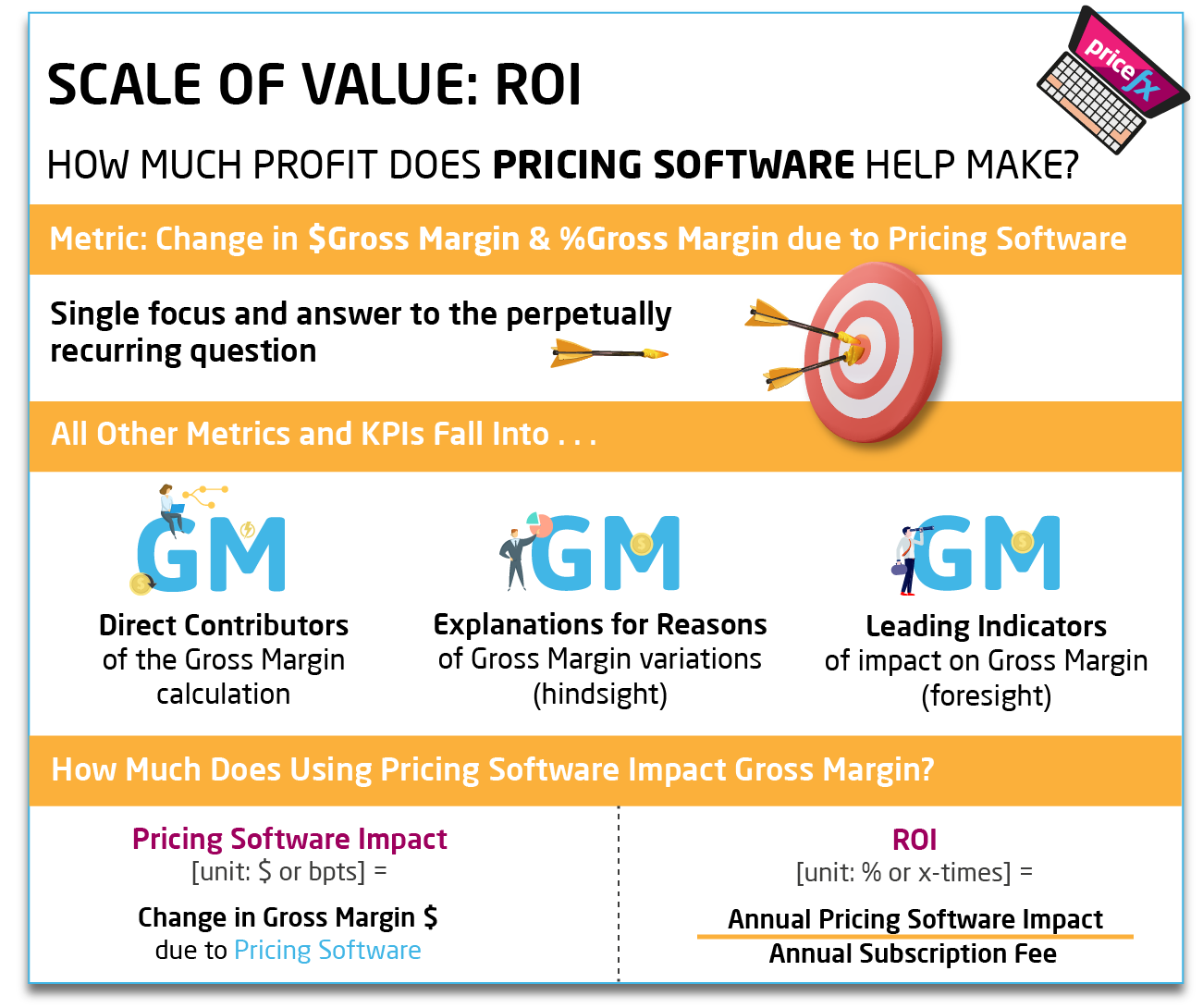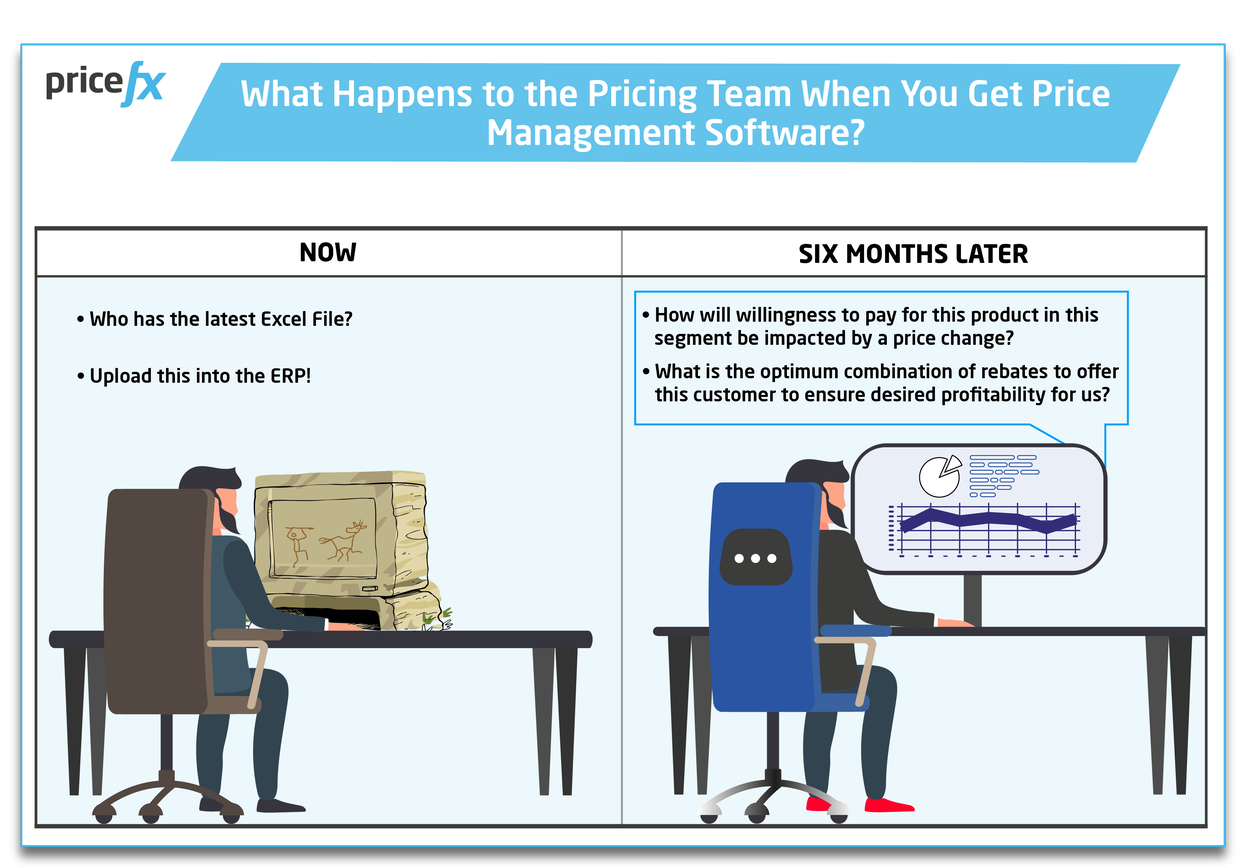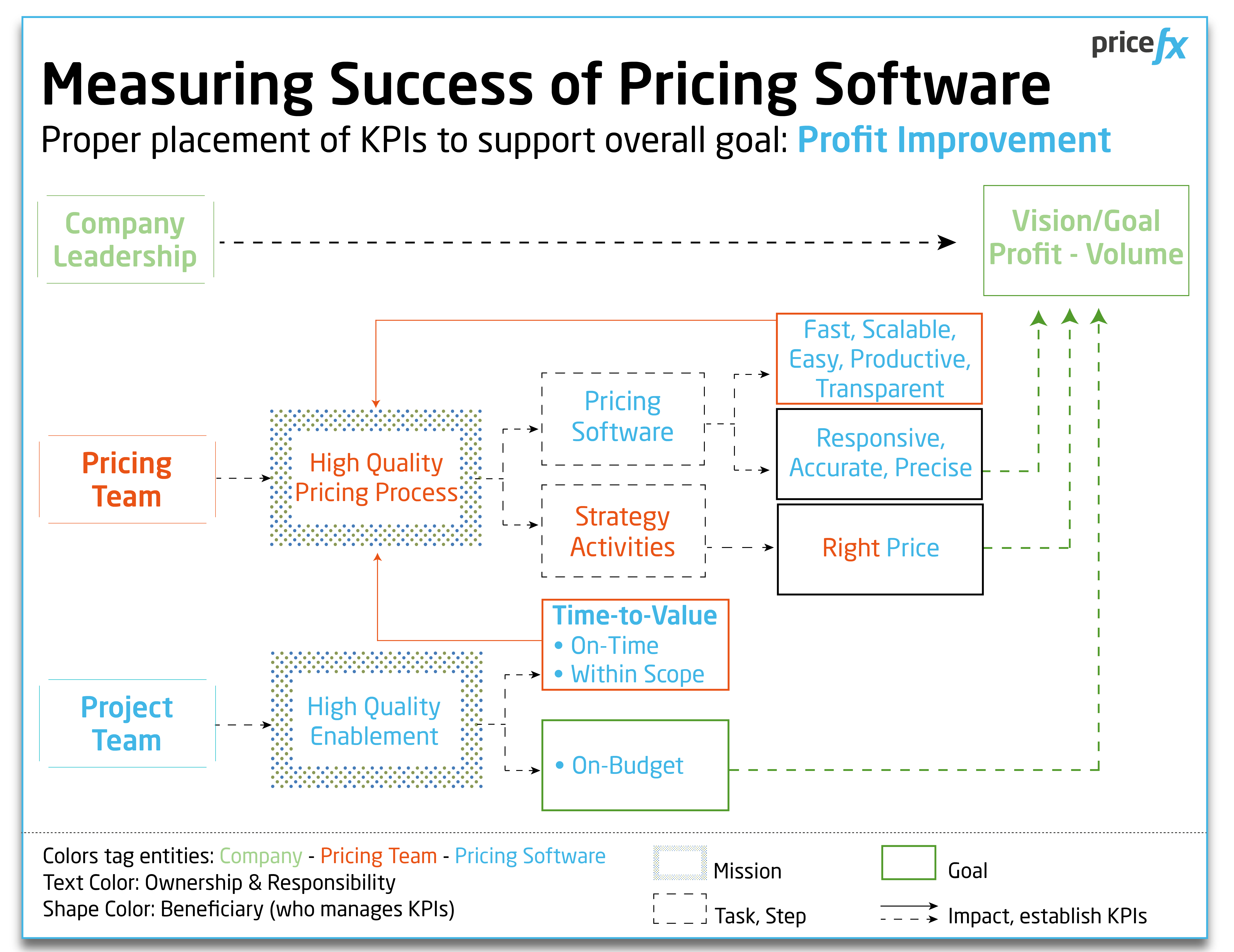How Investing in Pricing Software Can Save You Money
February 27th, 2023 (Updated 03/09/2023) | 10 min. read
Is your organization suffering from needing to rein in costs but at the same time you are looking to add value to your customers and turn a profit? Did you know that investing in pricing software can be a wise business decision even if your company is experiencing a bad year financially? While it may seem counterintuitive to spend money on new software during a period of financial hardship, pricing software can help you improve your pricing strategy and ultimately increase revenue, margins or whatever your unique set of business goals and required outcomes are. However, framing what ‘investment’ means may depend on who you speak with in your company.
At Pricefx, as a next-generation, cloud-native pricing software leader, we have spent more than a decade answering all manner of pressure points from our customers including how the technology can drive the sale of your products at your optimum price but as a bonus, also creates business efficiencies and further points of value that you may never have thought possible. Frequently, the more volatile markets become, the more value our customers see by using our solution and responding rapidly to market changes to maintain margins and market share while others stumble.
In this article, we provide you with a range of strategies on how investing in pricing software can save your business money. Before homing in on that, let’s begin by defining how ‘investing’ can mean different things for different departments of your organization to give you a more accurate overall snapshot of the possible Return-to-Investment (ROI) bump.
‘Investing’ Means Different Things for Different Departments of Your Business
Different departments of your organization will naturally have different perspectives when it comes to pricing software and how it can save your company money. When pitching the investment of pricing software in your business, there is an intrinsic importance of understanding who the audience is when presenting information about the software, as different stakeholders may have different views on its value.
How Your Finance & Marketing Departments See the Investment Differently
Finance professionals often view pricing software costs as a pure expense, while marketing professionals view it as a tool to help them achieve the company’s overarching business goals, such generating high-quality leads, or raising brand awareness to increasing customer value, to improving your referral rate. The pricing software can help generate ideas and opportunities for marketing campaigns or other productions and manage or improve the pricing process.
While the cost savings can be significant from a pure financial point of view, they are not enough to fully credit the software’s value. To do this, you need to focus on the software’s potential to generate ideas and improve processes for your business, in addition to the cost savings on offer.
Understanding the different perspectives that internal stakeholders may have towards pricing software will assist ineffectively communicating its value and potential for ROI.
The Simplified ROI Justification of the Financial Department
Investing in pricing software can be a game-changer for businesses looking to optimize their pricing strategies and save money over the long run. The software can help businesses measure the change in margin and the impact it has on their finances. The pricing software also provides a common denominator that can be used by both finance and marketing departments to determine the cost-effectiveness of their pricing strategies.
The process of justifying ROI through pricing software can be a bit complex, but a simplified formula can help stakeholders understand the potential return on investment. This formula is based on the change in gross margin divided by the subscription fee, with the ongoing subscription serving as an investment in the software.

Businesses need to look at pricing software as an investment rather than a cost, focusing on the opportunities that the software can create and support. Finance teams will still view the software as a cost element and use a hurdle ROI to determine the projected change in margin and payback period.
It is not a wrong view, but it is not the whole picture.
The Big Picture Ways That Investing in Pricing Software Can Save You Money
However, looking alone through the lens of the financial team can be a little short sighted to the true and complete ways that investing in pricing software can save your business money.
By focusing on the opportunities and potential ROI a little deeper through a more holistic company lens can help in justifying the investment and reap the benefits of a more optimized pricing strategy for your organization.
The process improvement that comes with pricing software depends on the consumer of the information. People who manage the process may not have direct input or control over the price itself, but they can use the software to produce a better price and make their lives easier by streamlining data and updating lists.
The beauty of pricing software is that it can do a lot more than supply your company with the silver bullet on price to enhance your profit. Sure, it can do all of that, but it does a lot more too and as result, that is where we need to think of the investment as something more nuanced than pure gross margin percentage improvement alone.
Pricing software can be a valuable tool for businesses to improve their processes, save time, and increase profitability indirectly.
Looking at the image above, it is clearly apparent that pricing software can provide benefits such as automating pricing processes, saving time, and reducing errors, its value as an ROI driver is better illustrated as a complex, multi-dimensional, and non-linear spider–web-type process rather than a simple financial formula. While the benefits may not be immediately apparent in gross margin or ROI, they are still significant. The software’s ability to improve the process can make businesses more agile, allowing them to react to inputs and requests faster. This, in turn, can have a positive impact on turnaround time,be the foundation of improved win-rates, which grow market share as well as efficiency, and consequently affect gross margin and thereby ROI.
However, taking up this approach will require re-thinking the way your company may currently define your Key Performance Indicators (KPIs).
Check this article on the new set of Important Pricing KPIs your business may need to consider to thrive in today’s dynamic market.
Another often missed cost saving of pricing software is that it allows businesses to automate their pricing processes, saving time and reducing errors. With the help of pricing software, businesses can set prices more quickly and accurately and consistently – all because of obsolete manual intervention. This can help businesses keep up with market fluctuations and changes in demand and stay competitive in their respective industries.
A different benefit of pricing software is that it can help businesses to optimize their pricing strategies. Pricing software can analyze sales data and other market information to identify trends and patterns and recommend pricing strategies that are tailored to specific products, regions, or customer segments. This can help businesses maximize their profits and minimize their risks, by identifying the most effective pricing strategies for their specific business.
What’s more, the price list impact simulation functionality of some pricing software even allows you to assess the business impact of an intended update of a price list before applying it to the market while considering all elements of the related price waterfall, including special price agreements. It provides a visual comparison of a simulated price list change scenario with the current status quo, as well as all relevant calculation outputs to evaluate intended changes.
Learn More About Price List Simulation Here
In addition to these benefits, pricing software can also provide businesses with greater visibility and control over their pricing processes. Pricing software can track pricing changes over time and provide detailed reports and analysis of pricing trends and performance. This can help businesses to identify areas where pricing strategies can be improved and make more informed decisions about future pricing changes.
Pricing Software Value Example for a B2B Manufacturing Company
One way that a B2B company might speed up their ROI on an automated pricing software solution in the process improvement terms rather than purely financial terms alone is by utilizing the software to improve their overall efficiency and productivity.
For example, a manufacturing company that produces and sells industrial equipment may have a large and complex pricing structure due to the varying costs of raw materials, labor, and other factors. In the past, their pricing team may have spent hours or even days manually calculating prices for each individual customer quote, considering all the distinct factors.
By implementing an automated pricing software solution, the company can streamline this process and reduce the time it takes to generate accurate quotes. With the software, they can input all their pricing factors into a central system and generate custom quotes for customers in just minutes, rather than hours or days.
This increased efficiency not only speeds up the time it takes to close deals and generate revenue, but it also frees up the pricing team’s time to focus on other value-added activities. For example, they may be able to spend more time analyzing sales data to identify trends and opportunities for growth or working with the sales team to develop targeted pricing strategies for specific customer segments.

In addition to these benefits, the company may also see improvements in customer satisfaction due to the faster turnaround times for quotes. Customers who receive accurate, customized quotes quickly are more likely to view the company as responsive and reliable, which can lead to increased loyalty and repeat business.
Overall, by focusing on process improvements in addition to financial gains, the B2B company can see a faster ROI on their investment in an automated pricing software solution. The software not only helps them generate revenue more quickly, but also enables them to operate more efficiently and effectively in the long term.
Become Leaner & Efficient to Save Your Business Money
Of course, pricing software can drive considerable gross margin improvements, but do not underestimate the significant impacts on your business’s bottom line by improving efficiency, accuracy, and agility. By automating pricing processes, optimizing pricing strategies, and providing greater visibility and control, pricing software like the award-winning Pricefx solution can help businesses stay competitive and profitable in today’s fast-paced, data-driven business environment.
But there are circumstances where you may not need pricing software at all, but how can you be sure?
Check out the article below for the top 6 reasons you may not need it & perhaps the single best reason why you do need pricing software:
On the flip side, if know already that a total pricing software solution will fit your company’s needs, this article below can help you finalize your pricing software choice:
Happy Pricing & Value Discovery!



